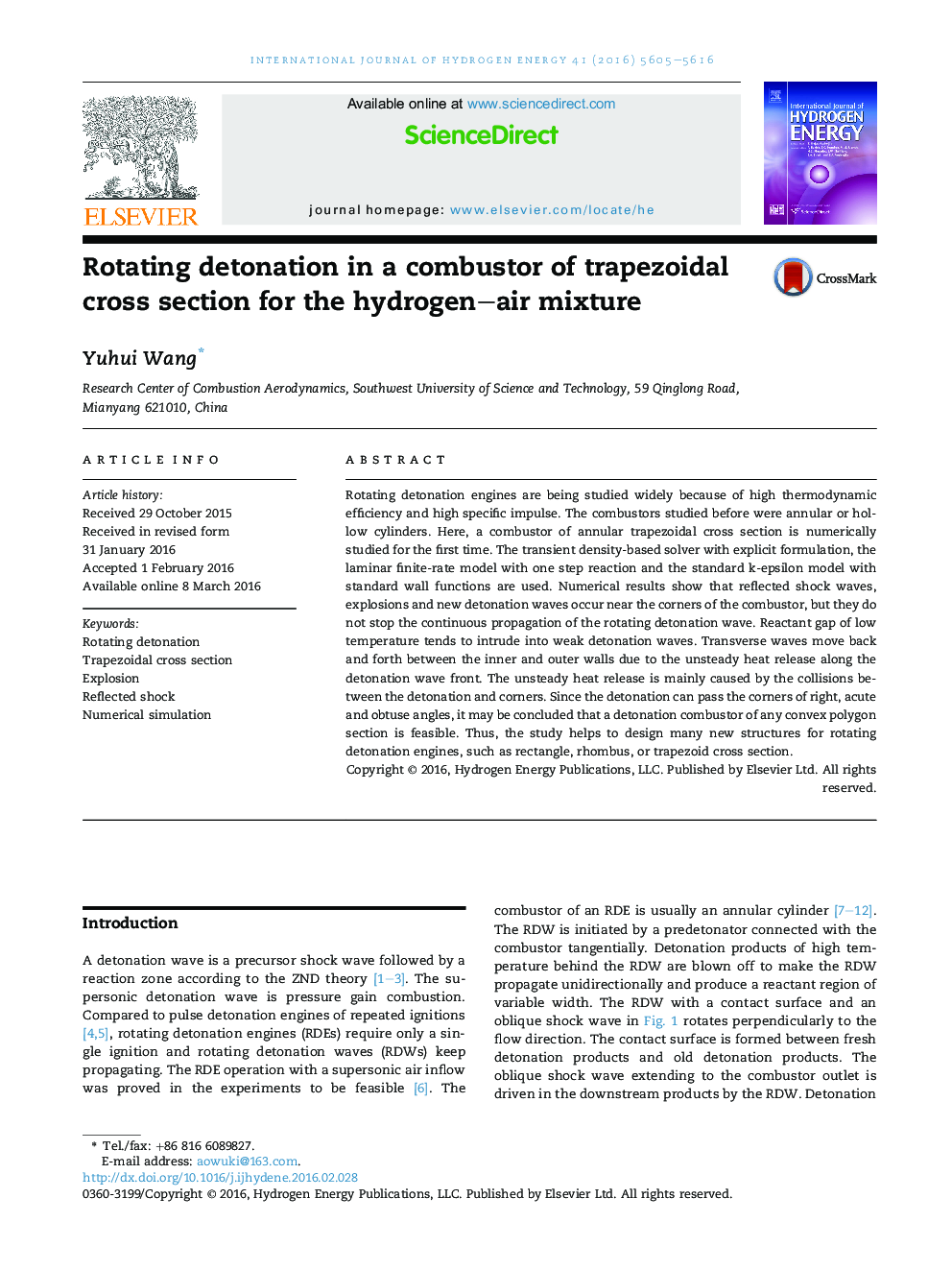| Article ID | Journal | Published Year | Pages | File Type |
|---|---|---|---|---|
| 1268801 | International Journal of Hydrogen Energy | 2016 | 12 Pages |
•Trapezoidal rotating detonation combustors are studied for the first time.•Rotating detonation can pass corners of right, acute and obtuse angles.•Rotating detonation combustors of any convex polygon section are feasible.•Reactant gap tends to intrude into weak detonation waves.•Viscous models are employed to study rotating detonation.
Rotating detonation engines are being studied widely because of high thermodynamic efficiency and high specific impulse. The combustors studied before were annular or hollow cylinders. Here, a combustor of annular trapezoidal cross section is numerically studied for the first time. The transient density-based solver with explicit formulation, the laminar finite-rate model with one step reaction and the standard k-epsilon model with standard wall functions are used. Numerical results show that reflected shock waves, explosions and new detonation waves occur near the corners of the combustor, but they do not stop the continuous propagation of the rotating detonation wave. Reactant gap of low temperature tends to intrude into weak detonation waves. Transverse waves move back and forth between the inner and outer walls due to the unsteady heat release along the detonation wave front. The unsteady heat release is mainly caused by the collisions between the detonation and corners. Since the detonation can pass the corners of right, acute and obtuse angles, it may be concluded that a detonation combustor of any convex polygon section is feasible. Thus, the study helps to design many new structures for rotating detonation engines, such as rectangle, rhombus, or trapezoid cross section.
